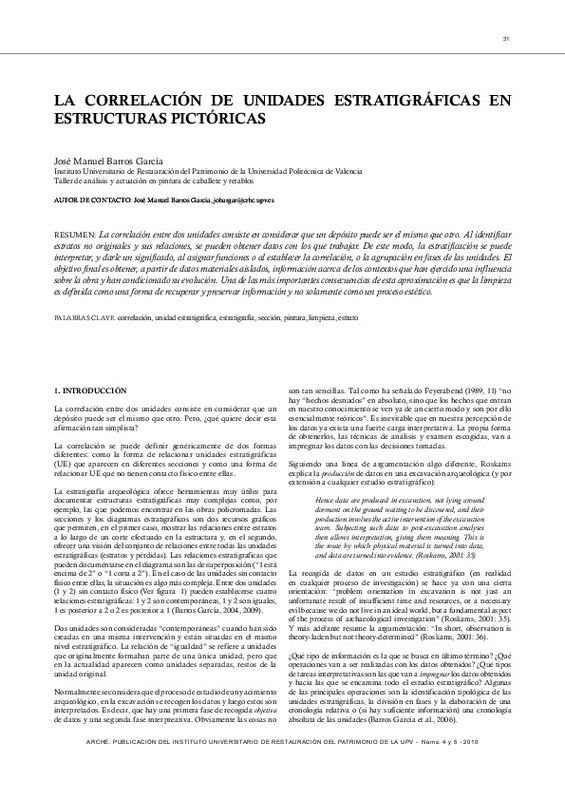JavaScript is disabled for your browser. Some features of this site may not work without it.
Buscar en RiuNet
Listar
Mi cuenta
Estadísticas
Ayuda RiuNet
Admin. UPV
La correlación de unidades estratigráficas en estructuras pictóricas
Mostrar el registro completo del ítem
Barros García, JM. (2010). La correlación de unidades estratigráficas en estructuras pictóricas. Arché. (4-5):31-36. http://hdl.handle.net/10251/30162
Por favor, use este identificador para citar o enlazar este ítem: http://hdl.handle.net/10251/30162
Ficheros en el ítem
Metadatos del ítem
| Título: | La correlación de unidades estratigráficas en estructuras pictóricas | |
| Otro titulo: |
|
|
| Autor: | ||
| Entidad UPV: |
|
|
| Fecha difusión: |
|
|
| Resumen: |
La correlacion entre dos unidades consiste en considerar que un deposito puede ser el mismo que otro. Al identificar estratos no originales y sus relaciones, se pueden obtener datos con los que trabajar. De este modo, la ...[+]
Correlation between two units consists in considering one deposit to be the same as another. In identifying non-original layers and their relationships we can obtain data with which to work. In this way, assigning functions ...[+]
|
|
| Palabras clave: |
|
|
| Derechos de uso: | Reserva de todos los derechos | |
| Fuente: |
|
|
| Editorial: |
|
|
| Tipo: |
|







